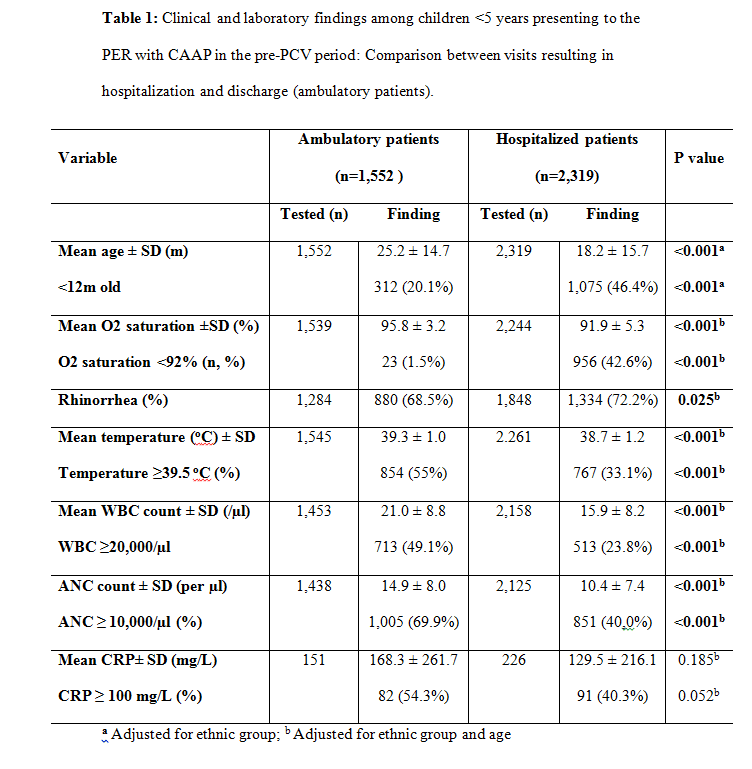Background: To better understand the potential of pneumococcal conjugate vaccines impact on CAAP incidence and severity, we compared hospitalized and outpatient CAAP episodes in children
Methods: This is an ongoing, population-based prospective surveillance on hospital visits for CAAP. CAAP was determined radiologically according to the WHO criteria. Demographic and clinical variables were compared between Pediatric Emergency Room (PER) visits resulting in hospitalization (hospitalized patients) and those resulting in discharge (outpatients). Data from the 4 years before PCV implementation (2004-2008) were used in this analysis.
Results: Overall, 3,871 CAAP episodes were included. Hospitalized children had different characteristics than outpatients: they were younger, had higher rates of hypoxemia and rhinorrhea, lower temperature, and lower leukocytes, neutrophils and CRP counts (Table 1).
Discussion: In the pre-PCV era, hospitalized children differed demographically and clinically from outpatients, with hospitalized patients presenting more frequently symptoms often attributable to viral disease. These findings, in the presence of clear alveolar infiltrates suggest a more frequent involvement of respiratory viruses as single virus or as viral-bacterial co-infections in hospitalized patients with CAAP than among their outpatient counterparts. These findings suggest a potential different post -PCV impact dynamics between hospitalized and outpatient episodes.


